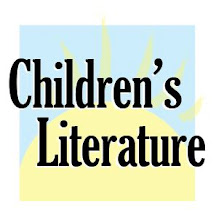Women’s History Month
Special Feature
Week 5
In honor of Women’s History Month we’ve asked
authors and illustrators in our booking service to participate in our special
questionnaire. Each week we will be posting different member’s responses to the
three questions below. We hope you enjoy their answers as much as we did!
1. What women writers do you admire?
2. What women in history would you invite to a
dinner party?
3. What advice do you have for young women today?
1. I really admire Katherine Paterson--I heard her speak at one
of the conferences and I think her speech is as eloquent as her writing. Bridge
to Terabithia is one of my all-time favorites. I also admire Donna Jo Napoli,
Phyllis Reynolds Naylor and Cornelia Funke. The Thief Lord I think is an
extraordinary story and also one of my all-time favorites.
2. I would invite the astronomer Maria Mitchell, St. Joan of Arc
and St. Clare, Eleanor Roosevelt, Barbara Jordan, Audrey Hepburn and Ingrid Bergman.
3. When I visit schools I tell young women (and young men) to
use their talents, work hard, and believe in themselves. I always use the
example of Galileo trying at first to please his parents by studying medicine
at the University, but switching to mathematics after 2 years to follow his
passion.
1. Virginia Woolf and Grace Paley.
2. My grandmother (who was a delightful woman, very engaged with
the world) and my great-grandmother, whom I never knew. She was a midwife in
New England and a widow at a young age who raised 6 children, including an
orphaned nephew. I inherited the rocking chair she had when she was a child. My
mom has wonderful memories of spending time with her, such as hunting for
mushrooms. And I'd like my mom to come to the dinner, also my sisters and our
daughters, so we could all spend this moment in time together.
3. Each day, think about (perhaps even write down) three things
for which you're grateful on that particular day.
1. I admire so many women writers, you'd run out of room! But at
the top of my list are Lee Smith, Jill McCorkle, Eudora Welty, Elizabeth Berg,
and Bailey White. Yes, they are mostly Southern women writers. Southern writers
come from a long-standing tradition of story-telling and women writers in
particular have grown up listening to the soft voices of their mothers and
other female relatives talking in kitchen, in the garden, and on the porch
after supper.
2. I wish I had known Margaret Wise Brown, the flamboyant,
eccentric children's picture book writer, so she would be first on my guest
list. After that, Marjorie Kinnan Rawlings, Marjorie Stoneman Douglas, Varina
Davis, and Dorothea Lange.
3. I would advise young women today to hang on to their dream
and point themselves in that direction, regardless of peer pressure, boys, and
the lure of false celebrity and making money. Yes, I know it's a very unpopular
stance. But it works.
1. One writer I admire is Helen Keller. We tend to remember
Keller for overcoming her disabilities to earn a college degree, and for
raising public awareness of causes in which she believed, but she also
published twelve books, including her autobiography, The Story of My Life. The written word became her voice. I also admire Rachel
Carson. While working for the U.S. Bureau of Fisheries in the 1940s and 1950s
and supporting herself, her mother, and two nieces, Carson produced two
best-selling books, Under the Sea Wind and The Sea Around Us, which revealed to
many readers the great variety of life on the shore and beneath the waves of
the ocean--before the days of television documentaries. Carson was battling
breast cancer when she researched and wrote the classic Silent Spring, which
alerted the world to the hazards of pesticides. Her books are beautifully
written; they are outstanding examples of nonfiction literature at its finest.
2. The woman I'd most want to invite to dinner is a writer, too.
I would be very curious to meet Jane Austen, the subject of my most recent
biography. This would be my chance to find out what she looked like, because we
really don't know. Just one portrait of Austen survives, a watercolor painted
by her sister, Cassandra, but people who knew Austen said it was a poor likeness.
We know from her books that Austen had a brilliant mind and a sharp wit, so she
would be good company. I would ask her to bring along Cassandra, who was her
closest friend and confidante, and their cousin Eliza, who was born in India
and raised in France and had a sparkling sophistication. If only it were
possible!
3. My advice for young women is the same that I would give to
young men. Have confidence in yourself, and never give up on your dreams. Work
hard to make them come true--never be afraid of hard work. And keep on learning
and growing throughout life.
1. Here's my eclectic blend: Christina Rossetti, Mary
Wollstonecraft Shelley, Erica Jong, and Jean Fritz.
2. George Sand, Joan of Arc, Frederic Bartholdi's mother (she
supposedly was his model for the Statue of Liberty), Nellie Melba (opera singer
and inspiration for a dessert.)
3. Friends and family are everything. If you spend time and
energy with them, your success will follow.
1. Toni Morrison, Rita Dove, and Kate Chopin.
2. Harriet Tubman, Billie Holiday, and Michelle Obama.
3. Toot your own horn. Don't make apologies for your ideas and
opinions. Trust your intuition.


















